10 Best Things To Do in Zion National Park
What are the 10 best things to do in Zion National Park? Without a doubt, the best thing to do in Zion is hiking. In this article, we will tell you which trails are the most beautiful and exciting, including their difficulty. You will also learn what hikes require a permit. But we are also giving you a list of other exciting things to do in Zion National Park besides hiking. Most importantly, we advise you step by step on how to prepare for a visit to this park: where to stay, how to get there, how to prepare for the hikes, and more. We’ve been to Zion National Park more than 8 times and now share our experiences.
This article may contain affiliate / compensated links. For full information, please see our disclaimer here.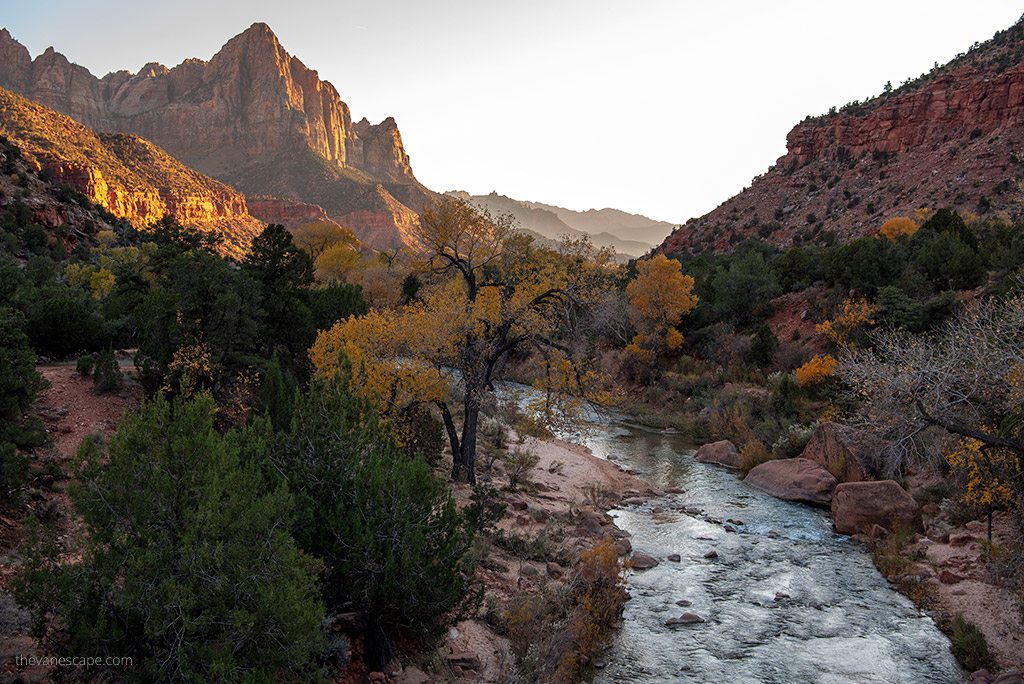
10 Best Things To Do in Zion National Park – Our Experiences
In Zion National Park, you will encounter cliffs, narrow canyons, reddish walls, the sound of water, deer, squirrels, and much more. Zion is one of the most beautiful national parks in Utah. But it is also one of the most crowded and popular.
So we will give you some hints on preparing for the visit. My partner Chris and I love hiking trails in Zion, like the Narrows, Angels Landing, and the Subway. But we also show you things to do in Zion National Park besides hiking.
We share our first-hand experience with this park, including where to stay, how to get there, and how to prepare. As we love southern Utah, we have been to Zion National Park about ten times so far and are planning our next visit. All pictures in this article were taken during our Zion adventures. Use the table of contents for more straightforward navigation.
Zion National Park is one of the most popular and most visited national parks in the U.S. In 2023, more than 5 million recreational visits were made. So plan your trip ahead, especially your accommodation. Go early for hikes and for sightseeing. Check all our tips below, as we have visited it many times.
Where is Zion National Park & How To Get There
Zion National Park is located in southwestern Utah near the picturesque town of Springdale. The Park has 229 square miles (590 km2), and its unique feature is Zion Canyon, which is 15 miles (24 km) long and up to 2,640 feet (800 m) deep.
The canyon walls are reddish, and the tan-colored Navajo Sandstone, eroded by the Virgin River, makes the Park the most photogenic. The Park’s highest peak is Horse Ranch Mountain, which is 8,726 ft (2,660 m) tall.
How to get to Zion by Air?
The most convenient airports to reach Zion National Park are Las Vegas International Airport, Salt Lake City International Airport, and St. George Regional Airport. You can also check our ready-to-go Utah National Parks Itinerary from Las Vegas.
How to get to Zion by Car?
Car is the best option to get to Zion National Park.
- From Salt Lake City, take I-15 S. It’s 308 miles and at least 4 hours and 30 minutes of driving.
- If you drive from Las Vegas, take I-15 N. It’s 160 miles and takes about 2 hours and 40 minutes to drive. If you plan to stay in Vegas, check out our detailed Las Vegas itinerary.
Shuttle Bus in Zion
Cars must be left at the parking lot in the park, and visitors must use the shuttle bus, which is a very convenient solution. Scenic Drive is closed to private vehicles during the shuttle season, March through November. You do not need a permit or reservation to ride a park shuttle.
TRIP TIP: You must use the shuttle bus system from March through November. The shuttle provides access along the Zion Canyon Scenic Drive to areas including Emerald Pools, West Rim Trail and Angels Landing, the Riverside Walk, and the Narrows. It will also take you to the park’s trails. You can get on and off the bus at any stop—details are on the official NPS website.
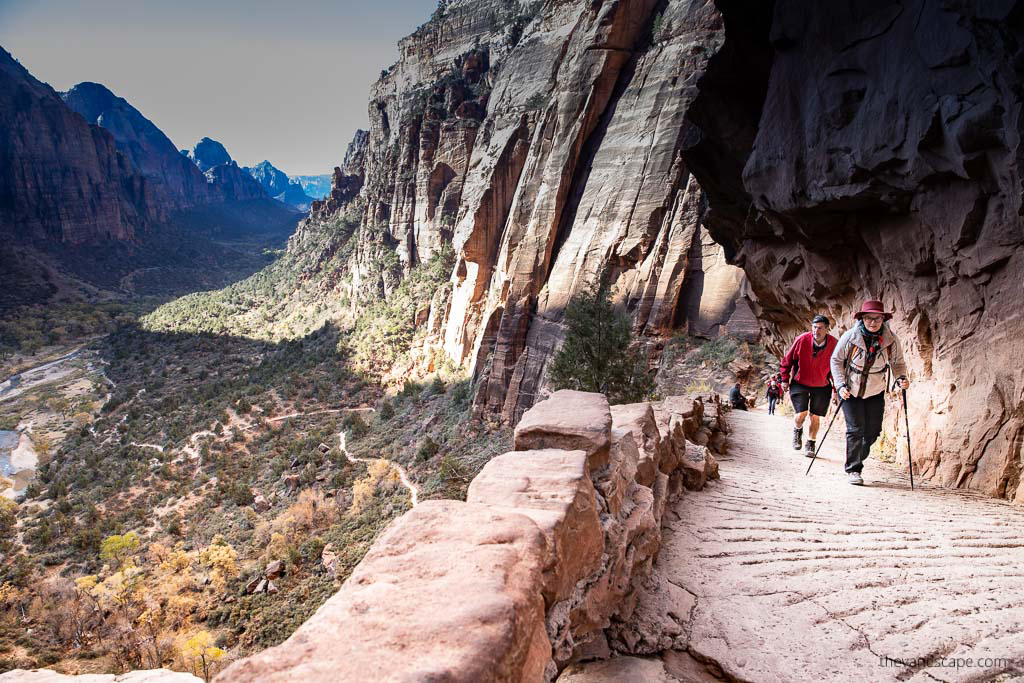
Zion National Park Entrance Fee
A private vehicle is $35 per week—a person entering by foot or bicycle: is $20 (under 15 is free of charge). But if you plan to visit more than two or three national parks, the best idea is to buy the America the Beautiful – National Parks & Federal Recreational Lands Annual Pass, for the reason that it costs only $79.99 per year, and you have access to more than 2,000 National Parks and federal recreation sites in the United States. The pass is valid for 1 year from the month of purchase!
Zion National Park Permits
Some activities in Zion National Park require a wilderness permit, which can be obtained on the official website.
Also, to do some hikes, you need permits. For season 2024, you must have a permit to do the famous Angels Landing Hike. You can apply for a permit on the official website.
We are lucky, as we got permits for each of those hikes and made those hikes, so we share our experiences.
- Angels Landing Hike – we describe in detail this hike and how to get a permit.
- The Narrows hike (top-down), but you do not need a permit to hike the Narrows from the Temple of Sinawava going upstream in the Virgin River, which we recommend below.
- The Subway hike (top-down and bottom-up) – check out this article, as we describe this hike and permits in detail.
- Overnight backpacking
- Climbing
- Canyoneering
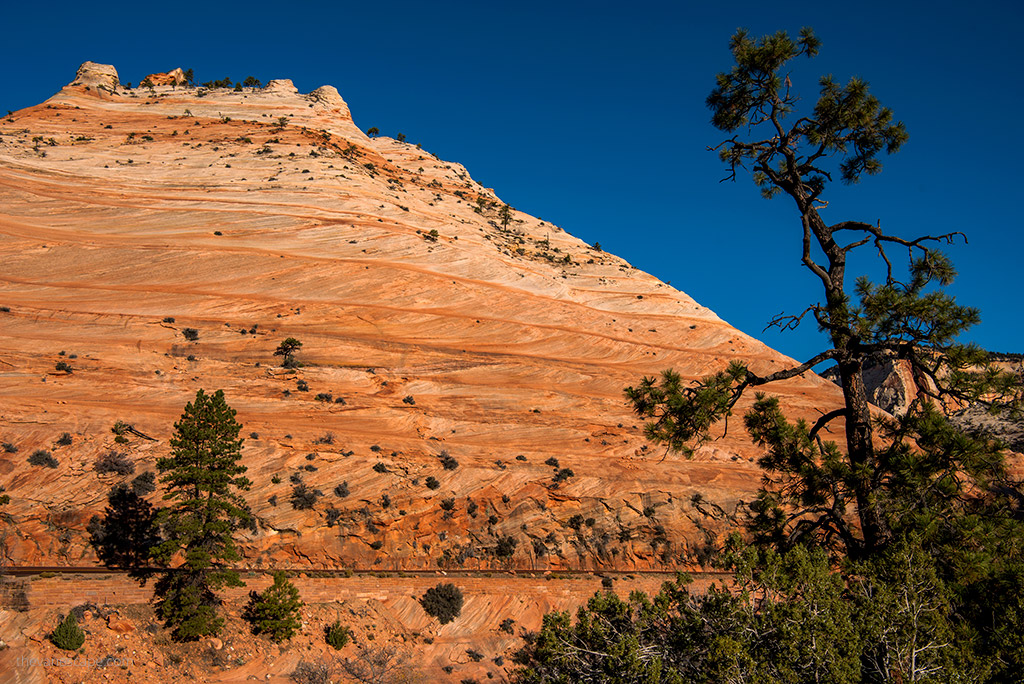
Getting Around Zion – Zion Shuttle Bus & Springdale Shuttle Bus
Zion Shuttle Bus through Zion Canyon Scenic Drive
First, the most important road in the Park is Zion Canyon Scenic Drive, which is 6 miles (9.7 km) long and ends at the Temple of Sinawava, named for the coyote god of the Paiute Indians.
Most of the year, the Zion Canyon Scenic Drive is only accessible by a shuttle bus to protect wildlife.
Zion Canyon Road is served by a shuttle bus from March to October. You must leave your car in the parking lot next to the Visitor Center and take a shuttle bus from there. The buses ride every 15 minutes or more and start at 6 a.m.
When can you drive in your own car via Zion Canyon Scenic Drive?
- You can only drive your car on this road if you go through the tunnel to East Entrance. So you must take a right in Canyon Junction (bus stop number 3).
- Or you can drive this route if you have confirmed accommodation in Zion Lodge (stop number 5).
Above all, see the shuttle schedule on the Park website for the times and dates of this service. The coaches are wheelchair accessible and can accommodate backpacks, climbing gear, and bicycles.
While in Zion Canyon, you may get on and off the shuttle as often as you like.
Springdale Shuttle Bus
If you are staying in Springdale, you can also take a shuttle bus from Springdale to Zion. In coordination with the Zion Canyon Shuttle, the Springdale Shuttle will pick up and drop off passengers in the town of Springdale.
To avoid parking hassles, park in Springdale and ride the shuttle to the park’s pedestrian entrance, the closest stop to the Zion Canyon Visitor Center. You can check the hours and stops from Springdale here.
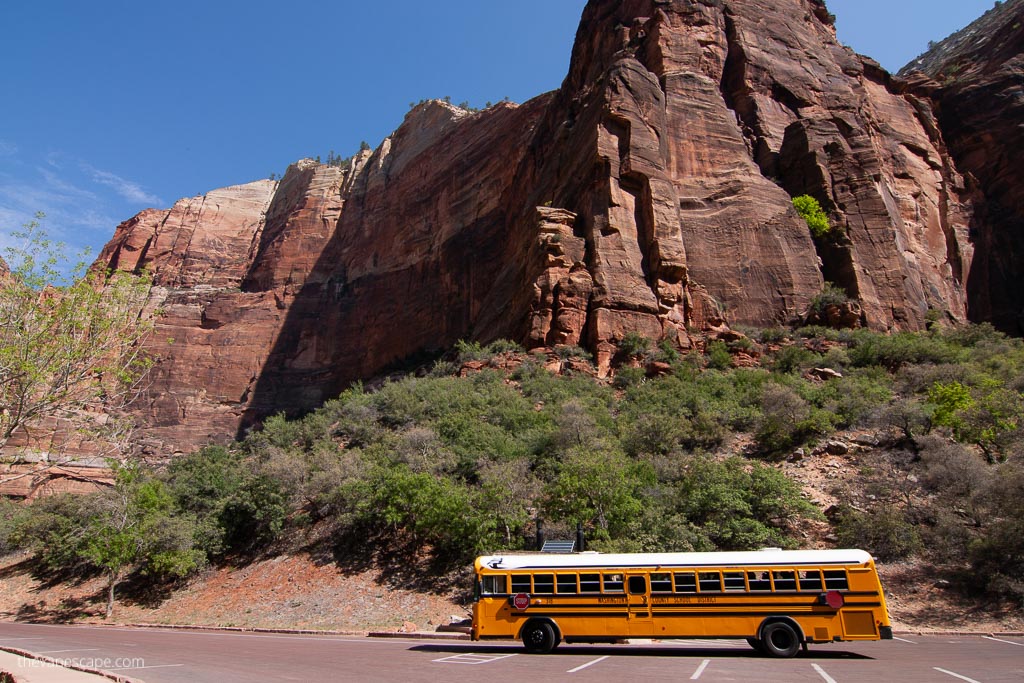
Zion National Park – 9 Shuttle Stops
There are 9 stops on Zion Canyon Scenic Drive. Therefore, you can take the bus and get off at any stop. Buses ride every 15 minutes or even more often. Below you will find information on which trailhead starts at each stop and what are the best views. See the detailed rules on the NPS website.
Visitor Center
1. One of the best things to do in Zion National Park is to start visiting the park from the Visitor Center. The Visitor Center building is located inside the park’s South Entrance, near Springdale. It’s worth starting your visit from the Visitor Center.
You can take the latest maps, check the weather, and get information about the trails and safety on the trails. Furthermore, you may check whether the trails have not been closed due to the weather conditions. Finally, you can get wilderness permits here. The visitor center is open daily during the following hours:
- Spring: 8:00 a.m. – 6:00 p.m.;
- Summer: 8:00 a.m. – 8:00 p.m.;
- Fall: 8:00 a.m. – 6:00 p.m.;
- Winter: 8:00 a.m. – 5:00 p.m.
But check updates on their website.
Museum
2. One of the top attractions in Zion National Park is the Museum. The Zion Human History Museum is at the second stop. Located one-half mile north of the Zion Canyon Visitor Center, the museum is open 10:00 a.m. – 5:00 p.m. daily and has longer summer hours.
It is closed from November through February. You can see permanent and temporary exhibits displaying the history of Zion National Park. A video about the Park, bookstore, and water bottle filling station is also shown. Finally, from this stop, you have views of the Towers of the Virgin and Bridge Mountain and access to the Pa’rus Trail.
Canyon Junction
3. Canyon Junction is the third stop. From this point, you can take Zion-Mount Carmel Highway to East Entrance to 8 and 89 to Mt. Carmel Junction, Grand Canyon National Park, and Bryce Canyon National Park. There is a tunnel on this road. Furthermore, no bikes or pedestrians are allowed.
The Zion-Mt. Carmel Tunnel was built in the 1920s, when large cars were less frequent. From Canyon Junction, you have views of the Virgin River and Zion Canyon and access to the Pa’rus Trail.
TRIP TIP: Vehicles 11’4” tall or taller, or 7’10” wide or more full, require one-lane traffic control through the tunnel. Visitors requiring traffic control through the tunnel must pay a $15 and entrance fees per vehicle. Vehicles not permitted in the tunnel include the following: vehicles over 13’1” tall; Semi-trucks and commercial vehicles; Vehicles carrying hazardous materials; Vehicles weighing more than 50,000 lb; Combined vehicles or buses over 50 ft.
Court of the Patriarchs
4. The Court of the Patriarchs is the fourth stop. From this stop, you have to take a short and steep trail to the viewpoint with views of Abraham, Isaac, and Jacob Peaks, Mount Moroni, and The Sentinel.
Zion Lodge
5. At stop number 5 is located at the famous Zion Lodge. One of the best things to do in Zion is visit this Lodge. Even if you don’t stay here for a night, stop for a while. It is a historic lodge with restaurants, a bookstore, restrooms, and water bottle-filling stations.
You can get here by private car only if you have a reservation at the Lodge. This stop lets you view Lady Mountain, Heaps Canyon, and the Virgin River. Finally, from this point, you can access the famous Emerald Pools Trails, The Grotto Trail, and the Sand Bench Trail.
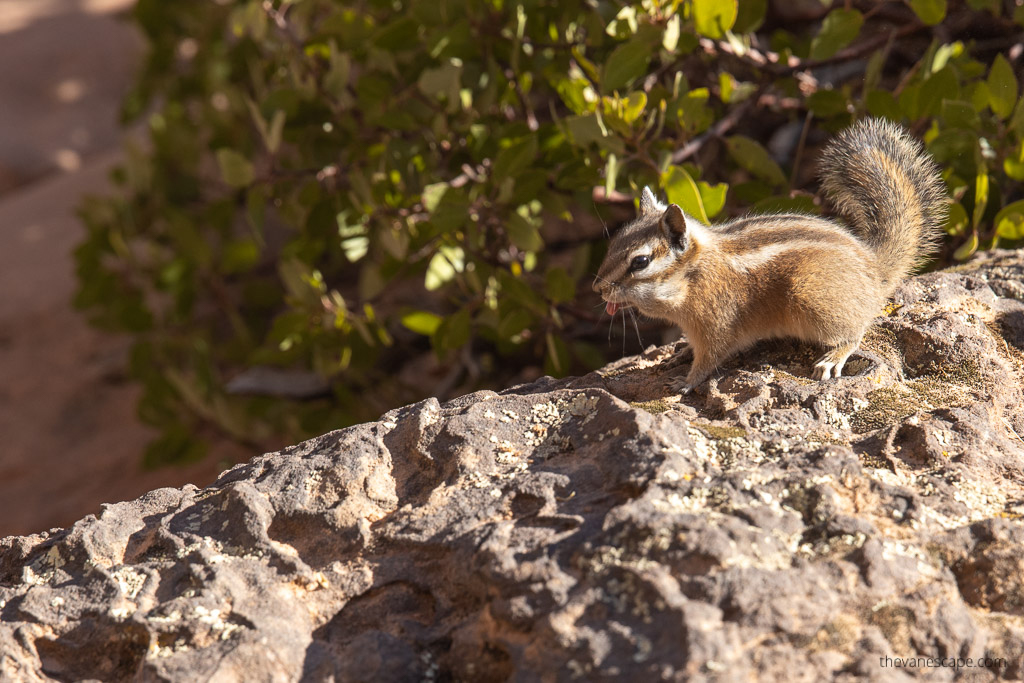
The Grotto
6. Stop number six is The Grotto. It is a shaded picnic area among cottonwood trees, with restrooms and water. You have excellent views of the Virgin River and Angels Landing from this stop. From this stop, you can access The Grotto Trail, Kayenta Trail, West Rim Trail, and the famous Angels Landing Trail via West Rim Trail.
Weeping Rock
7. Stop number 7 name is Weeping Rock. Dripping springs create hanging gardens. From this stop, you have views of Angels Landing and Big Bend. Furthermore, there is access to the Weeping Rock Trail, Hidden Canyon, and Observation Point via the East Rim Trail.
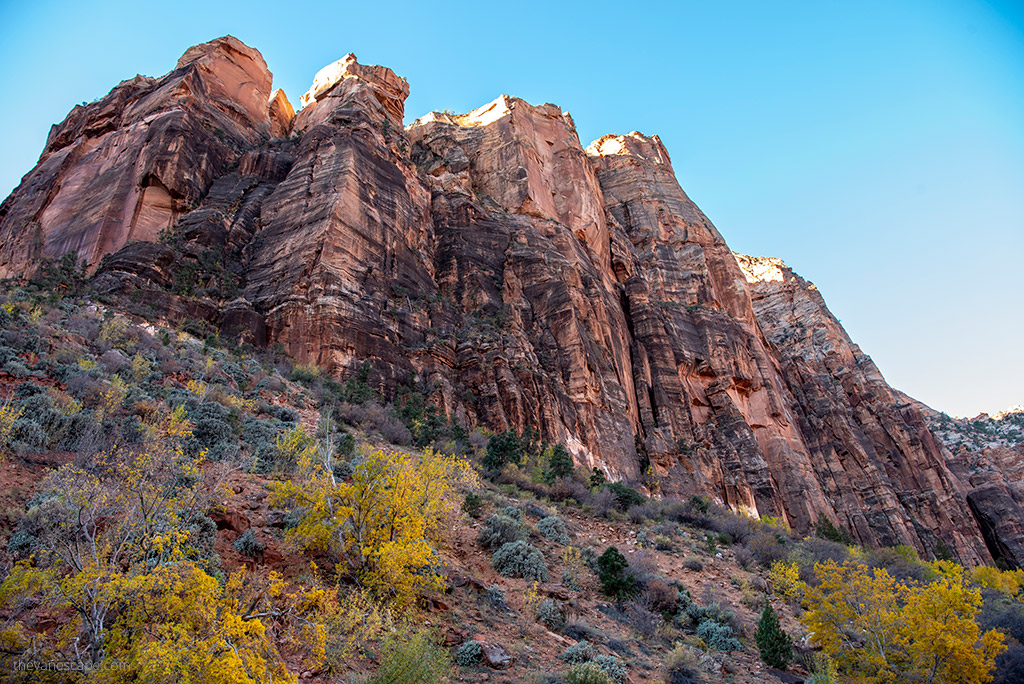
Big Bend
8. Stop number eight is Big Bend. From this stop, you can view the Virgin River, Angels Landing, and The Great White Throne.
Temple of Sinawava
9. The last stop of Zion Canyon Scenic Drive is known as the Temple of Sinawava. This point is the gateway to The Narrows, one of the best Zion hikes. There are restrooms and water bottle filling stations at this stop. From this stop, you can access the Riverside Walk with beautiful views, the Virgin River, and The Narrows.
The Narrows Gorge is only 20 feet (6 m) wide and up to 2,000 feet (610 m) tall. One of the best things to do in Zion National Park is to take the Riverside Walk and admire the surroundings of the Virgin River. Even if you don’t plan the Narrows hike, do Riverside Walk. It’s an easy and short walk with spectacular views.
PRO TIP: If you are looking for a good map of Zion National Park, our favorite is Zion National Park Trails Illustrated Map. But if you plan to visit other parks in Utah, a set of 5 maps for Utah’s Mighty 5 is more profitable to buy.
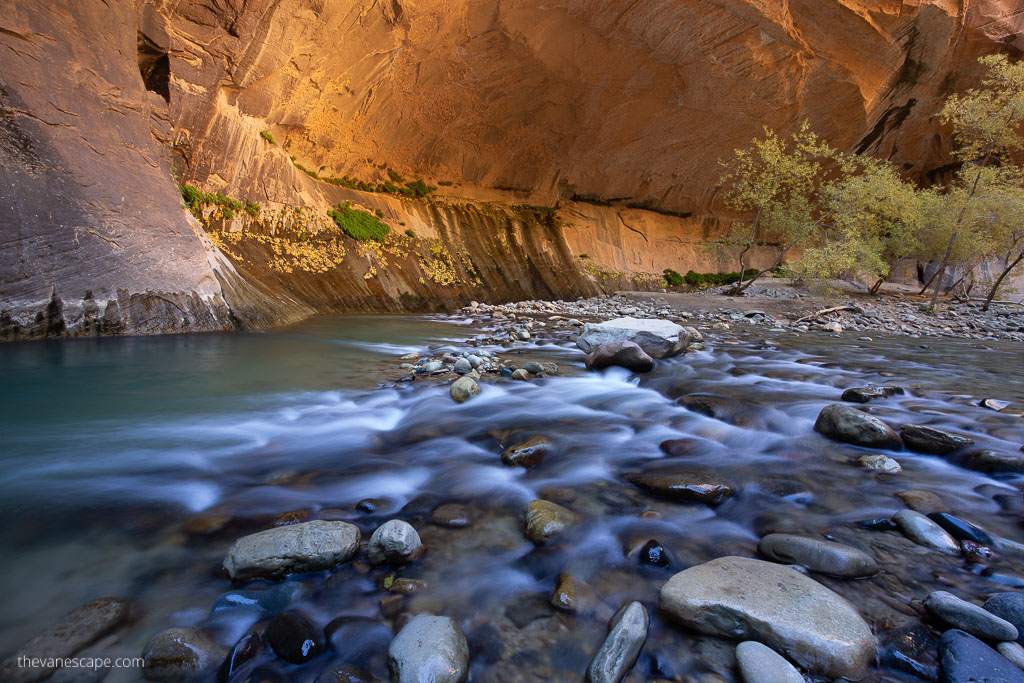
Zion National Park Weather
The weather in Zion National Park can be surprising. So, always check the Zion weather and alerts on the Park website before your visit. Always be prepared for a wide range of weather conditions. Temperatures in the park can vary dramatically with changes in elevation and the time of day.
The best idea is to dress in layers to prepare for temperature changes. Also, take a lot of water and extra food. So, what is the best time to visit Zion National Park? In our opinion, it is in the Fall and late Spring.
Spring in Zion National Park
You should have warm, sunny weather (rarely over 90 degrees), but it can get rainy often, especially in March – mid-May, so be prepared for the rain. Furthermore, temperature also varies with elevation and time of day. It is best to dress for a hike in layers.
The snowmelt and high water levels last until May, so check the weather before the hike and if the trail is open (it might be closed because of the weather conditions).
Summer in Zion National Park
In the summer months, Zion gets hot, with temperatures regularly surpassing 100 °F/38°C. Higher elevations may have temperatures above 90°F/32°C. The monsoon season is from July to September, surprising with thunderstorms, lightning, and heavy rain.
As a result, some trails, like The Subway or The Narrows, might be closed due to weather and high water levels. Bring extra clothes and check the weather before your hike. Finally, remember that flash floods are often and can be built from even a tiny amount of water.
Fall in Zion National Park
Fall is the best season for visiting Zion. Temperatures cool down, it’s dry, and the trees go full of fall color. It’s the most beautiful season for hiking and taking pictures. But as always, check the weather before your hike. Be prepared for chilly mornings and evenings.
Winter in Zion National Park
It might be cold and wet. Furthermore, some trails might be closed, and roads too, so check alerts before you go. It might be icy, even freezing, so wear warm clothes.
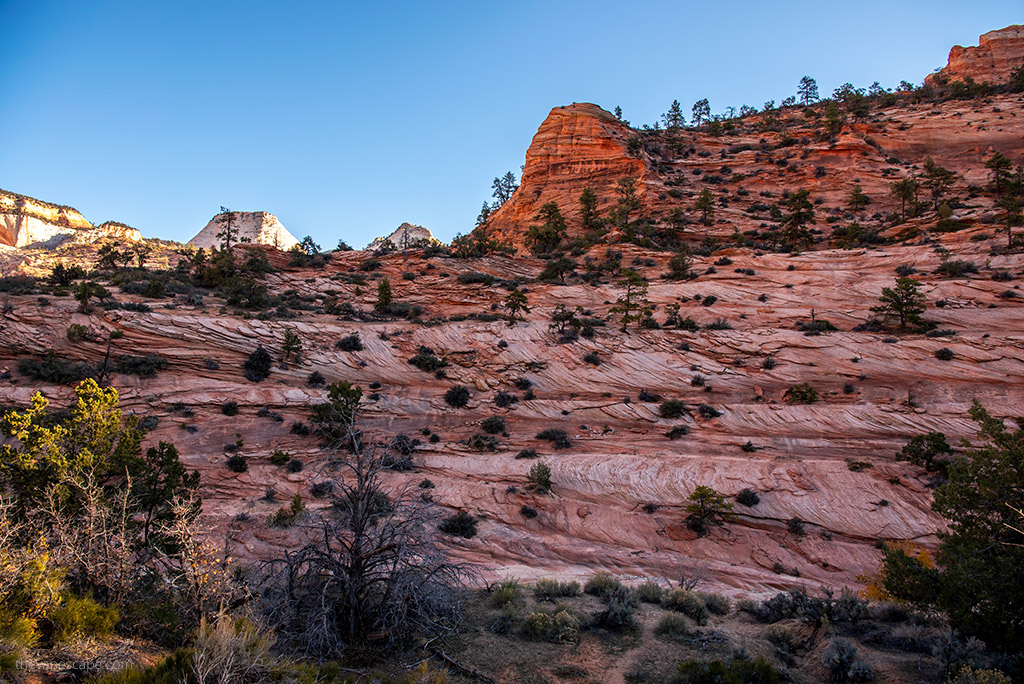
Zion National Park Lodging – Where to Stay in Zion?
Zion Lodge
First, Zion Lodge is the only “in-park” lodging in Zion. It’s located next to bus stop number 5, about 4.8 miles to Springdale Center and 3.8 miles to Zion National Park South Entrance. It’s a fabulous hotel with excellent reviews. It has cabins, hotels, rooms, and suites. Because of its unique location and history, it’s not cheap.
Furthermore, if you stay in this hotel, you can drive to this place in your car. But after this point, you must take a shuttle bus in front of the hotel to get to stops 6 to 9. Finally, Zion Lodge is very popular among tourists, so we advise you to book it several months in advance.
We recommend staying in Springdale because it is a beautiful town with exciting restaurants and shops, where you can have a great time after visiting the park. And what’s more, accommodation prices are for any budget.
Lodging in Springdale, Utah
Springdale is one of the best towns in Southern Utah. Incredibly picturesque, surrounded by the red walls of Zion Canyon. Furthermore, the city has beautiful aesthetic architecture, too. Finally, accommodation, restaurants, and souvenir shops will be found here.
Most of all, you will find here outdoor equipment rentals if you need climbing equipment, bikes, or water trekking equipment for hiking the Narrows. We advise you to book hotels well in advance.
Below you will find hotel suggestions with the highest guest rates and the best value for money for any budget. But it is not easy to find a cheap and pleasant room in Springdale. So it is worth checking out towns 30-40 minutes drive from Zion National Park.
Accommodation prices are much lower in Hildale or La Verkin. So if you are looking for budget options, check out these towns. On the map below, you will see the current accommodation offers and the precise location of the hotels, making it easier for you to decide which hotel to choose.
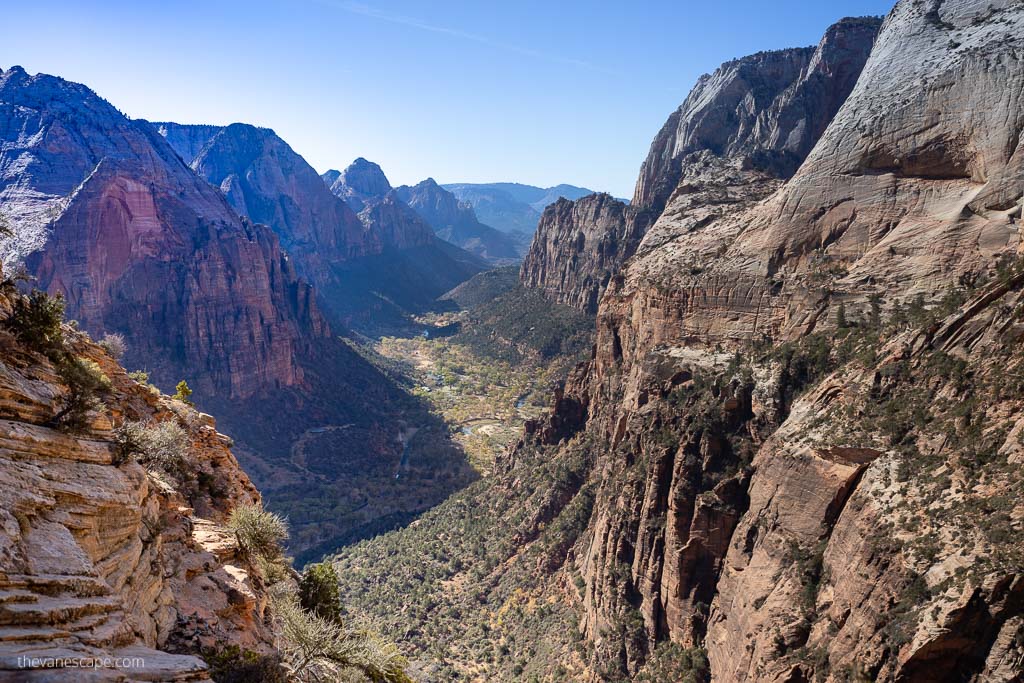
Budget Hotels in Springdale – the entrance to Zion National Park
Zion Park Motel is in Springdale, 1 mile from Zion National Park, and 92 meters from the shuttle to Zion National Park. This 2-star motel offers barbecue facilities and a children’s playground.
Red Rock Inn Cottages offers a terrace and mountain views. Red Rock Inn Cottages is located in Springdale. Free breakfast is served daily. Zion National Park is 1.2 miles from the property.
Mid-Range Hotels in Springdale – the entrance to Zion National Park
Driftwood Lodge is less than 2 miles from the entrance to Zion National Park. It features a seasonal outdoor pool, a hot tub, and a picnic area. Access to the Virgin River is also available. Free WiFi is provided.
La Quinta by Wyndham at Zion Park is just 3 miles from Zion National Park. A seasonal outdoor swimming pool, hot tub, and fitness center are provided at Zion Park La Quinta Inn and Suites.
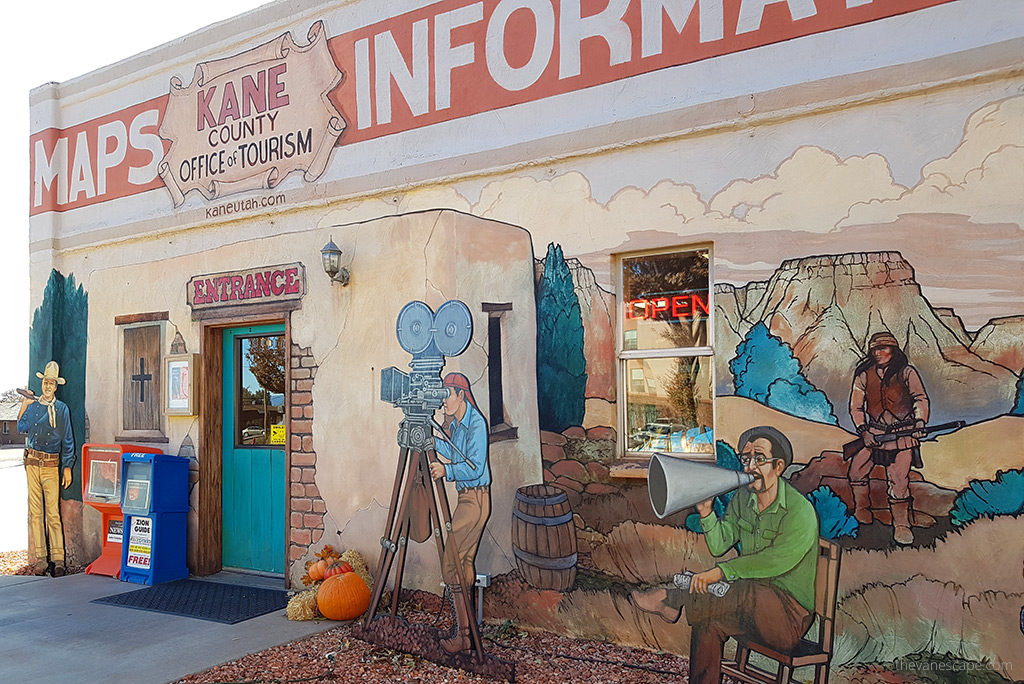
Hotels near Zion National Park
Apart from Springfield, several other towns have attractive accommodations in the area of Zion National Park. Furthermore, the prices are much better. And it’s not so far from the Park, too.
So, it’s worth considering lodging in Virgin, La Verkin, Hurricane, Hildale, and Kanab. Finally, you can find budget options, but luxury and original lodging are also possible.
We often stopped in Hurricane, Kanab (our favorite town, as Kanab offers fantastic outdoor activities), or La Verkin to save on accommodation. We set off to Zion National Park early in the morning to find a parking place and avoid traffic jams before the park.
Accommodation prices vary significantly, especially in the high season. Therefore, if you care about holiday budget savings, one of the following towns is worth considering.
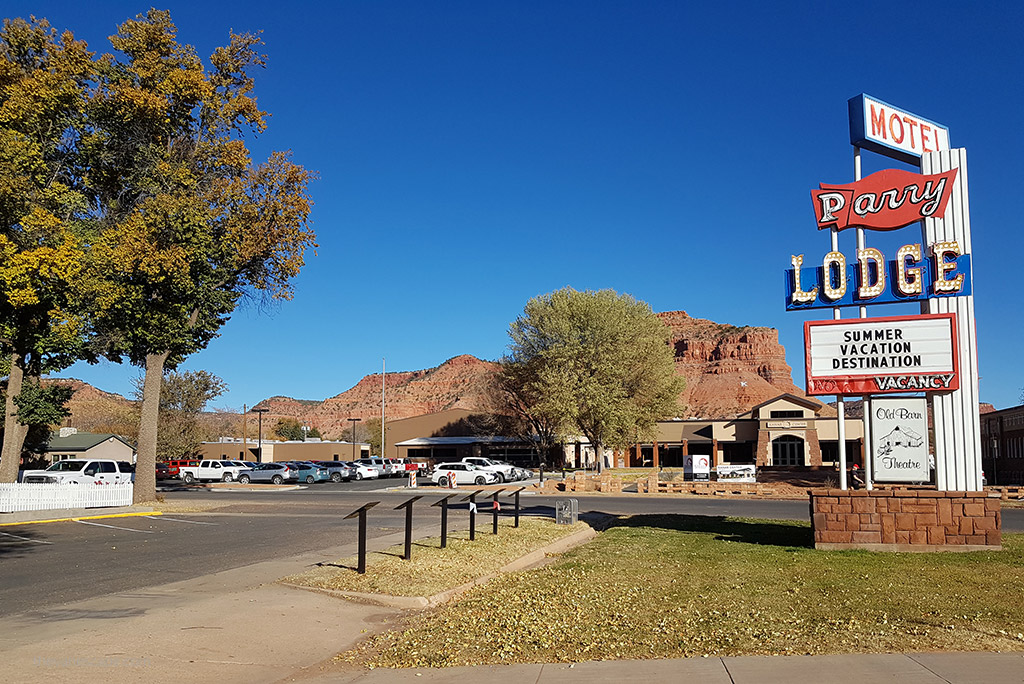
Zion National Park Campgrounds
Zion National Park has three campgrounds. South Campground and Watchman Campground are in Zion Canyon. The Lava Point Campground is about a 1-hour drive from Zion Canyon on Kolob Terrace Road. Camping is permitted in designated campsites but not pullouts or parking lots.
Camping is popular; all campgrounds are often full by mid-morning. From mid-March through late November, the campgrounds are full almost every night. So, to make reservations at South Campground and Watchman Campground, visit www.recreation.gov if you want to guarantee a camping spot.
RV Camping near Zion National Park
Zion Canyon Campground & Zion Campfire Lodge is located in Springdale. It’s only 0.5 miles from the South entrance to Zion National Park and has excellent reviews.
In Virgin, Zion River Resort RV Park & Campground is surrounded by majestic mountain views. It’s a great place!
WillowWind RV Park is located in Hurricane, a great home base for Zion, Bryce & Grand Canyon Parks.
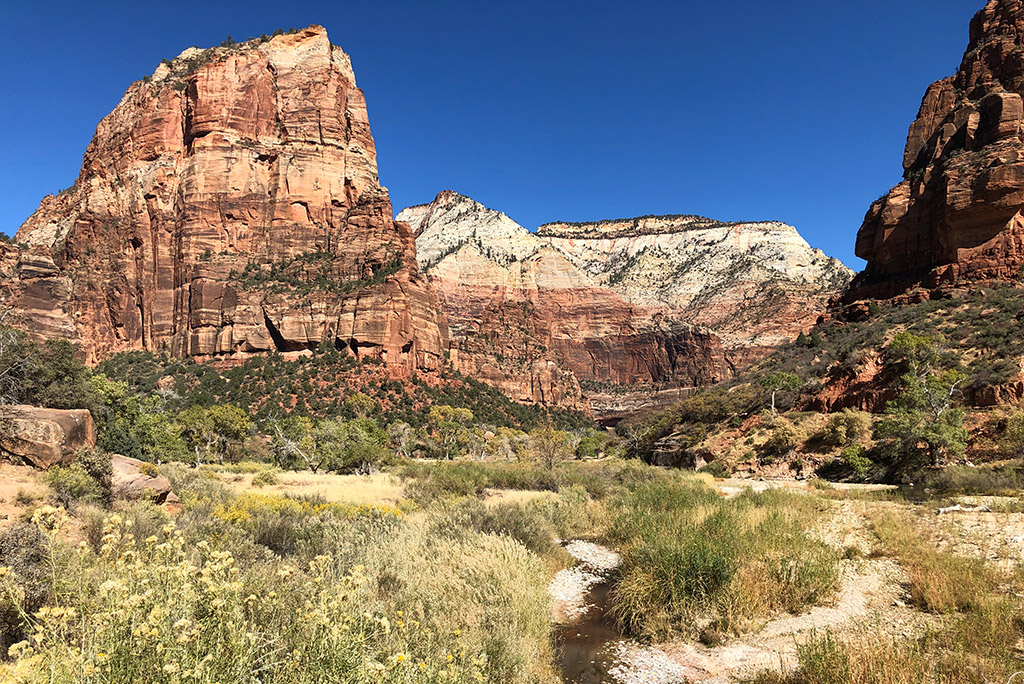
Camping on Public Lands – BLM area
But if you don’t need any amenities, water, electricity, or a toilet, you may use the Utah BLM area. If you are looking free overnight stay, you can use the BLM area in Utah (Bureau of Land Management) and park in the public lands. Before you park on public land, check the BLM website for the conditions and rules of where and how long you can park. When we traveled by RV, we often camp on public lands.
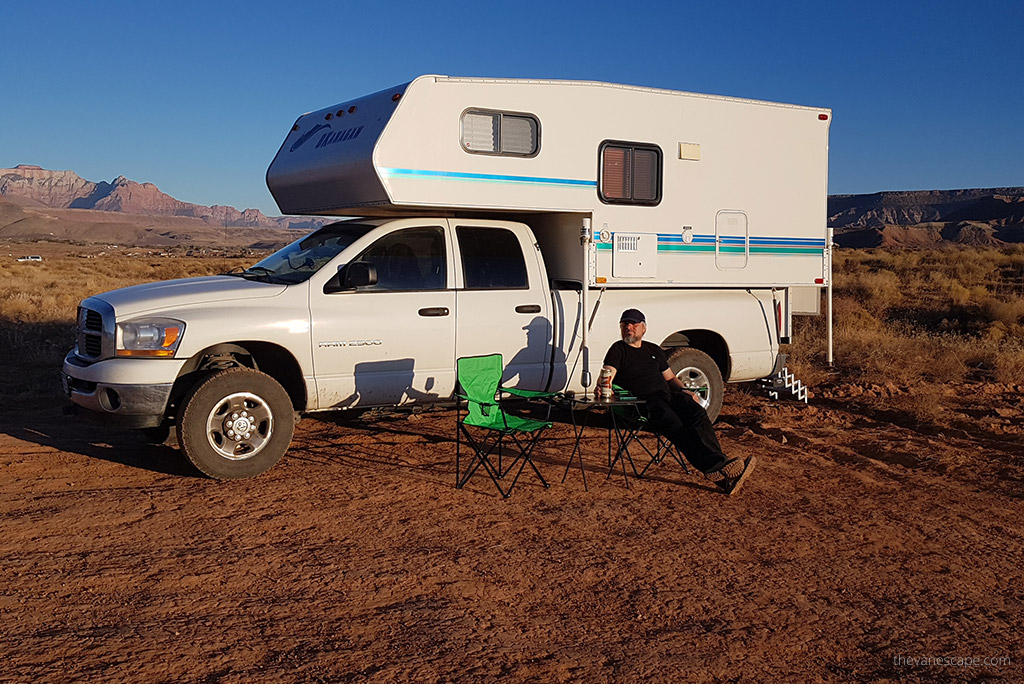
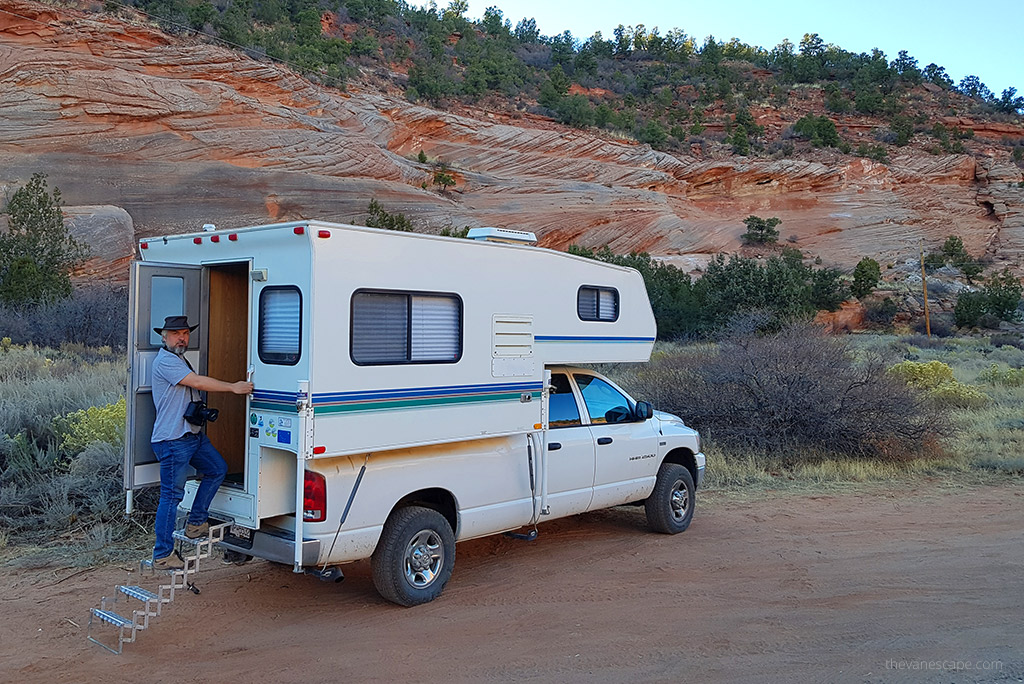
10 Best Things to Do in Zion National Park – Hiking
1. Go For a Hike in Zion
Hiking is one of the best things to do in Zion National Park. We have visited many national parks, but Zion has some of the best hiking trails.
First, there are a lot of hiking trails. Second, they are well-signed. And third, they have very different levels of difficulty. That’s why Zion National Park is an excellent place for families. There are very easy routes here for older people, people with limited mobility, and small children or parents with strollers. But there are also challenging and demanding routes. Of course, there are also hikes without marked trails, where you can easily get lost and need a permit.
Below you will find a list of our favorite routes, sorted by difficulty. This will make it easier for you to plan the route considering your needs and possibilities. Choose at least one of the hikes from our list below.
Best Hikes in Zion National Park
The three best hikes in Zion National Park are Angeles Landing Trail, The Subway, and The Narrows. In separate articles, you will find details about these three hikes with maps and all the necessary information. Below you will find basic info about the most exciting hikes in Zion. They are divided into easy, moderate, and demanding trails.
TRIP TIP: If you are planning holidays in Utah, check our detailed Utah Photography & Travel Guide, where you can find the most exciting & must-see places in Utah and valuable hints for trip planning. Check also our ready-to-go Utah Mighty 5 road trip itinerary!
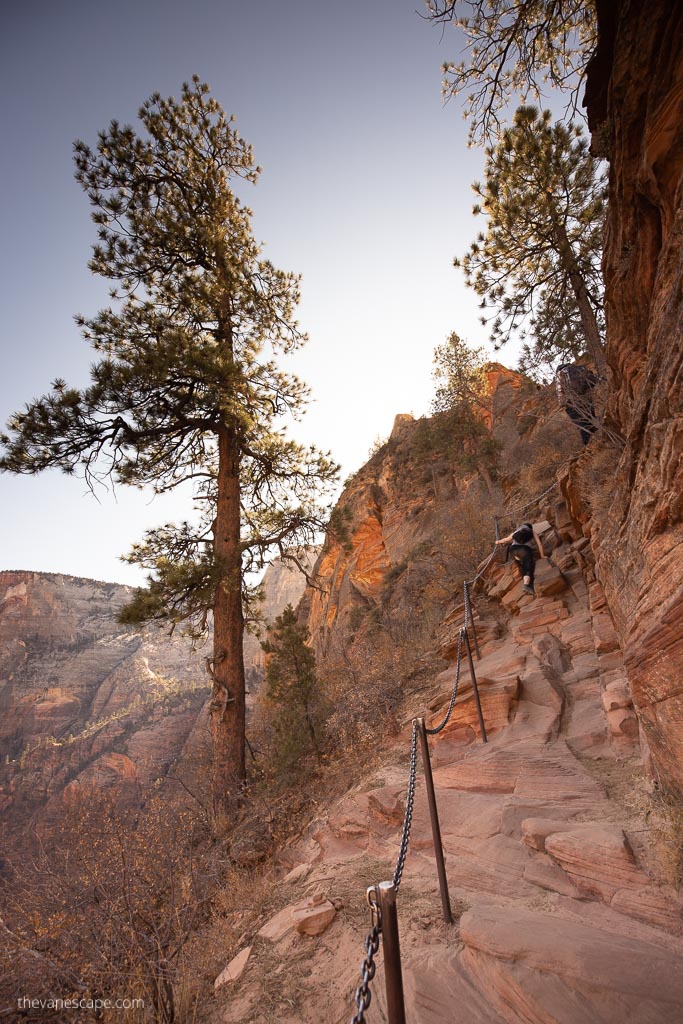
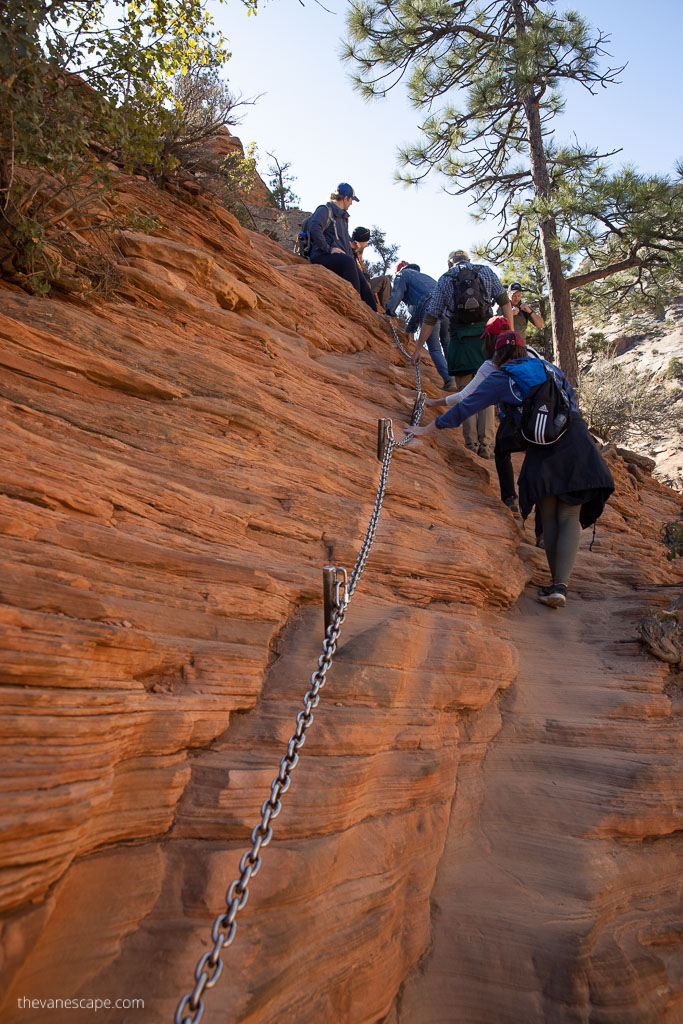
Best Easy Hikes in Zion National Park
Pa’rus Trail in Zion National Park
Shuttle Stop: 1
Hike Location: Zion Canyon Visitor Center
Round Trip Duration: 2 hours, 3.5 miles (5.6 km)
Elevation Change: 50 feet (15 m)
Trail Description: Easy, paved trail follows the Virgin River from the South Campground to Canyon Junction.
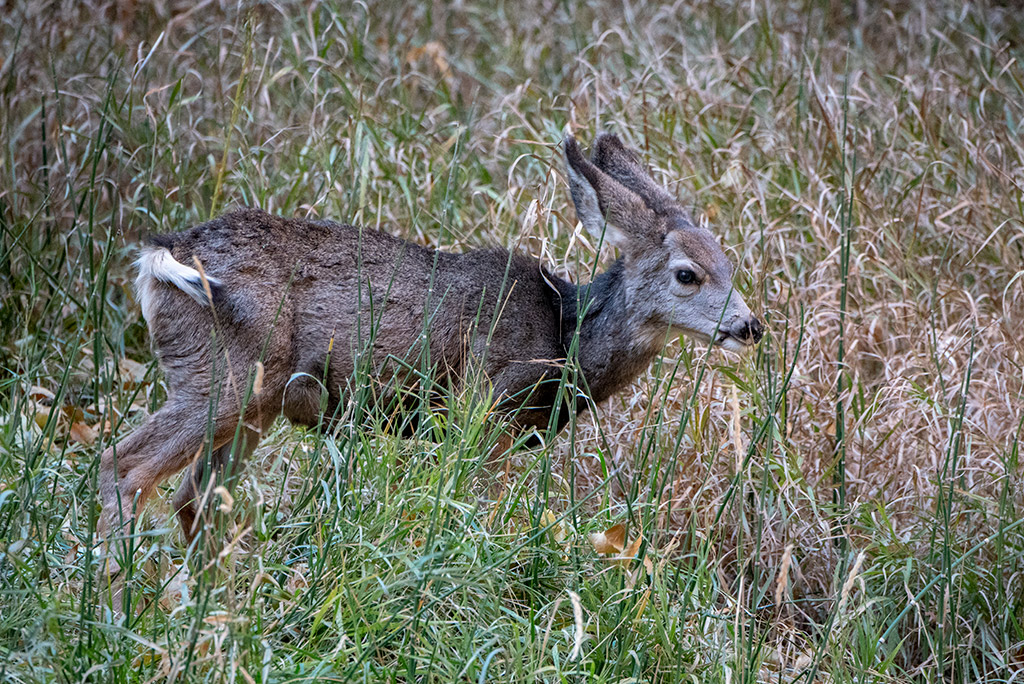
Lower Emerald Pool Trail in Zion National Park
Shuttle Stop: 5
Hike Location: Zion Lodge
Round Trip Duration: 1 hour, 1.2 miles (1.9 km)
Elevation Change: 69 feet (21 m)
Trail Description: A nice paved trail leads you to the Lower Emerald Pool and waterfalls. Connects to the Kayenta and Upper Emerald Pool Trails.
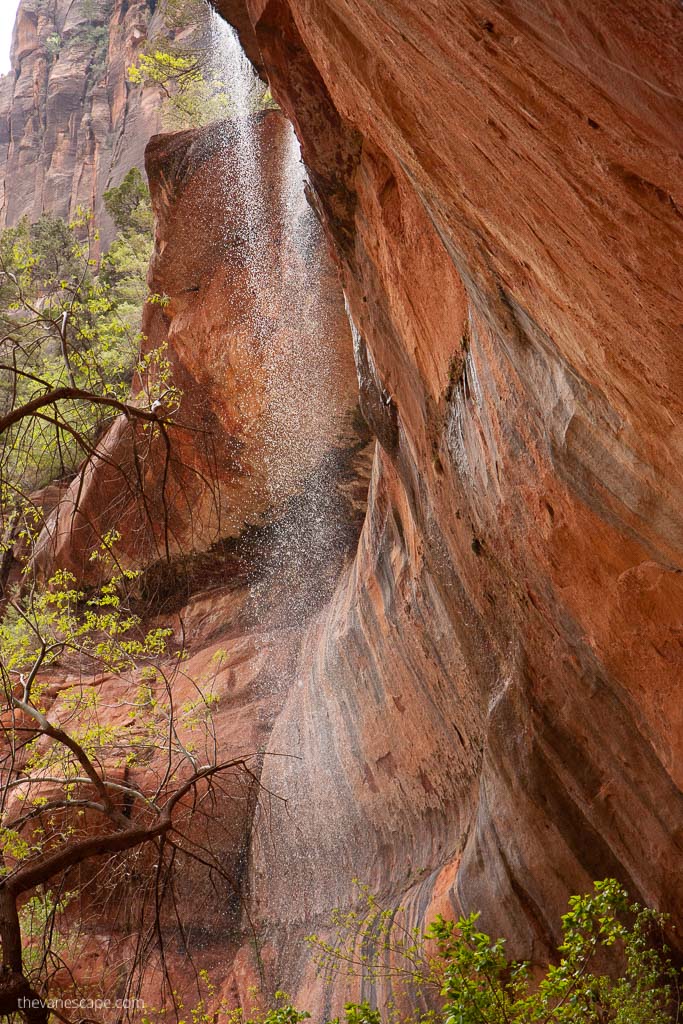
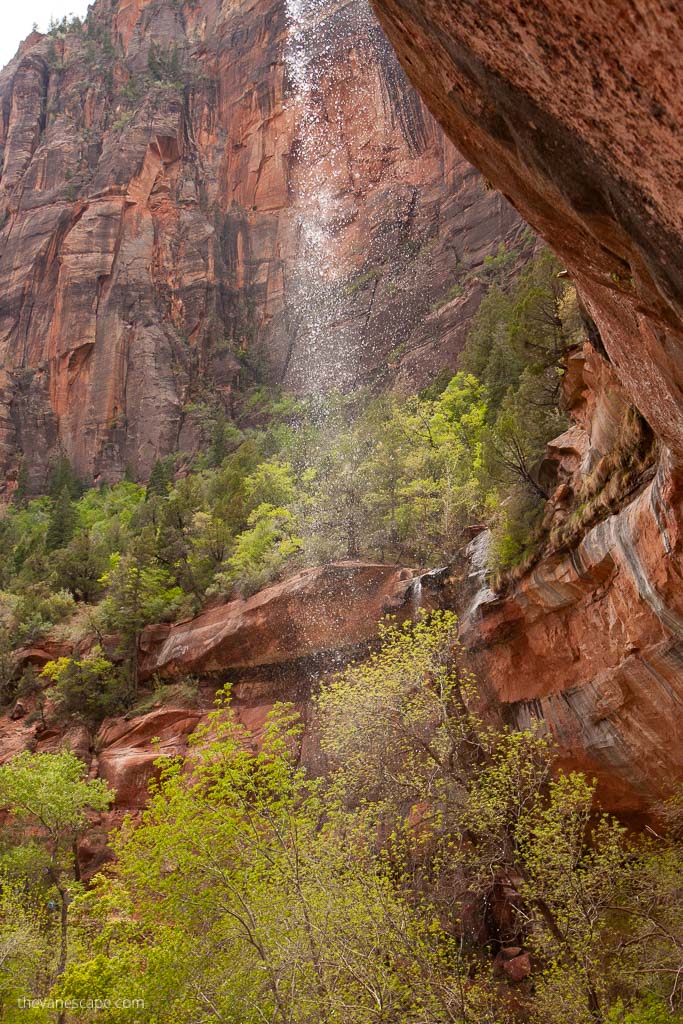
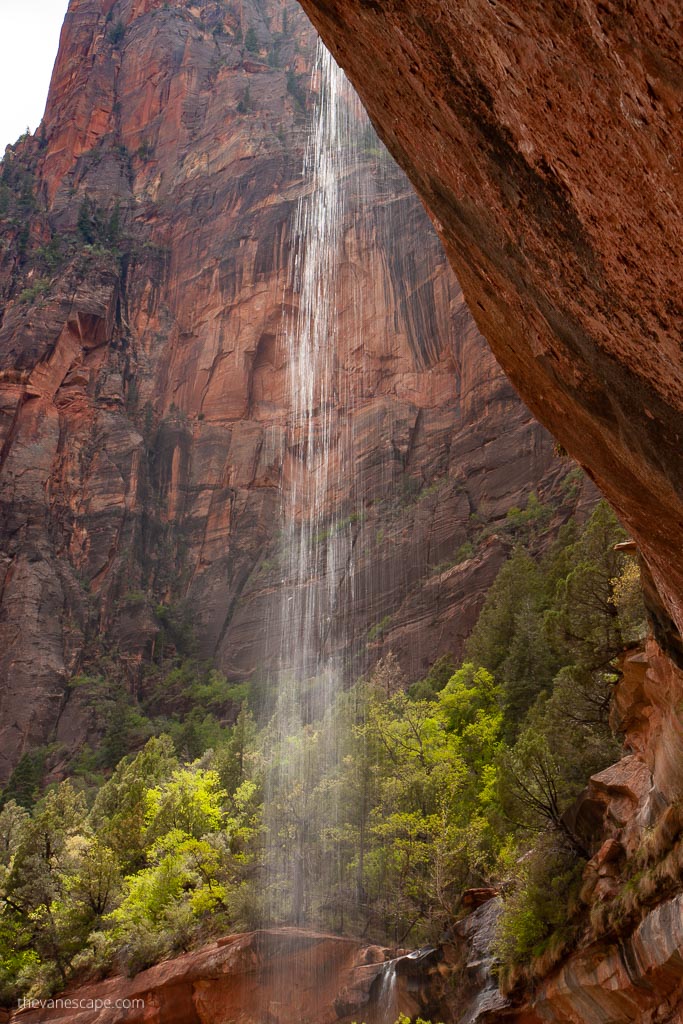
Weeping Rock Trail in Zion National Park
Shuttle Stop: 7
Hike Location: Weeping Rock
Round Trip Duration: 0.5 hour, 0.4 mile (0.6 km)
Elevation Change: 98 feet (30 m)
Trail Description: It’s a short but a little bit steep hike. This paved trail ends at a rock alcove with dripping springs, which looks impressive.
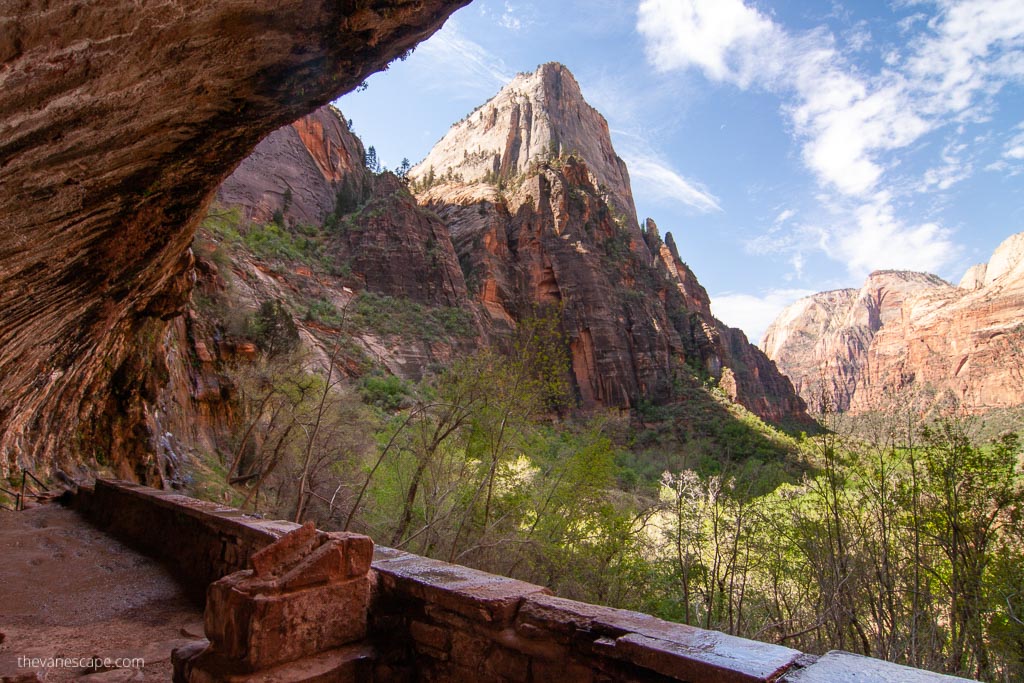
Riverside Walk in Zion National Park
Shuttle Stop: 9
Hike Location: Temple of Sinawava
Round Trip Duration: 1.5 hours, 2.2 miles (3.5 km)
Elevation Change: 57 feet (17 m)
Trail Description: We love this easy trail. It’s the essence of Zion. A paved trail follows the Virgin River along the bottom of a narrow canyon. It offers beautiful views, the sounds of the river, and wildlife.
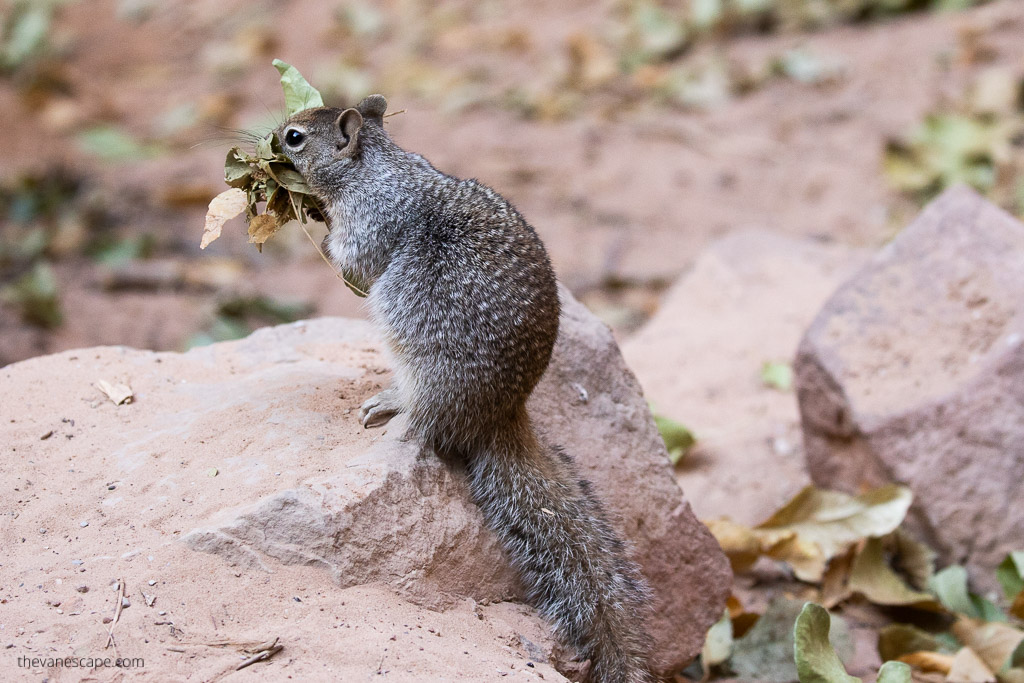
Best Moderate Hikes in Zion National Park
Upper Emerald Pool Trail in Zion National Park
Shuttle Stop: 5
Hike Location: Zion Lodge
Round Trip Duration: 1 hour, 1.0 mile (1.6 km)
Elevation Change: 200 feet (61 m)
Trail Description: It’s a sandy and rocky trail that climbs to the Upper Emerald Pool at the base of a cliff. It’s a great idea to connect it with Lower Emerald Pool Trail.
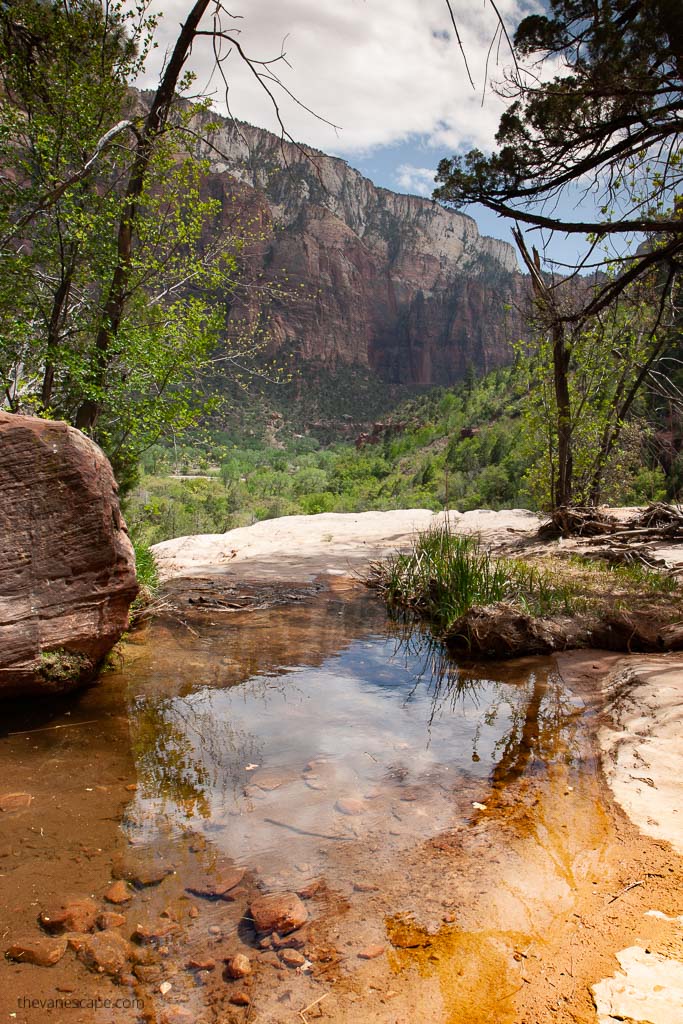
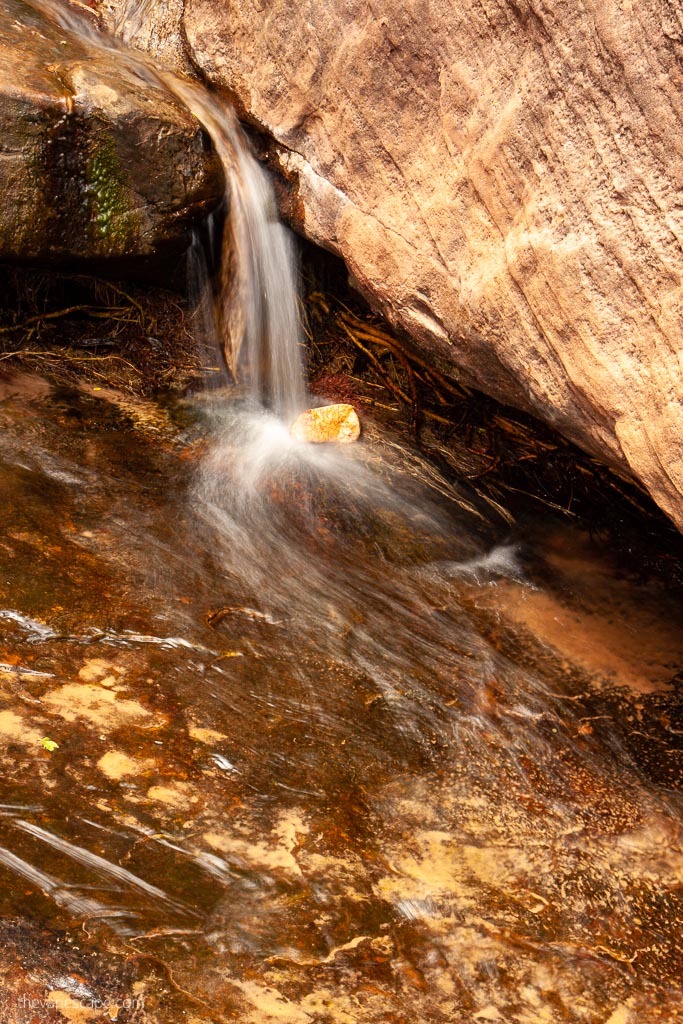
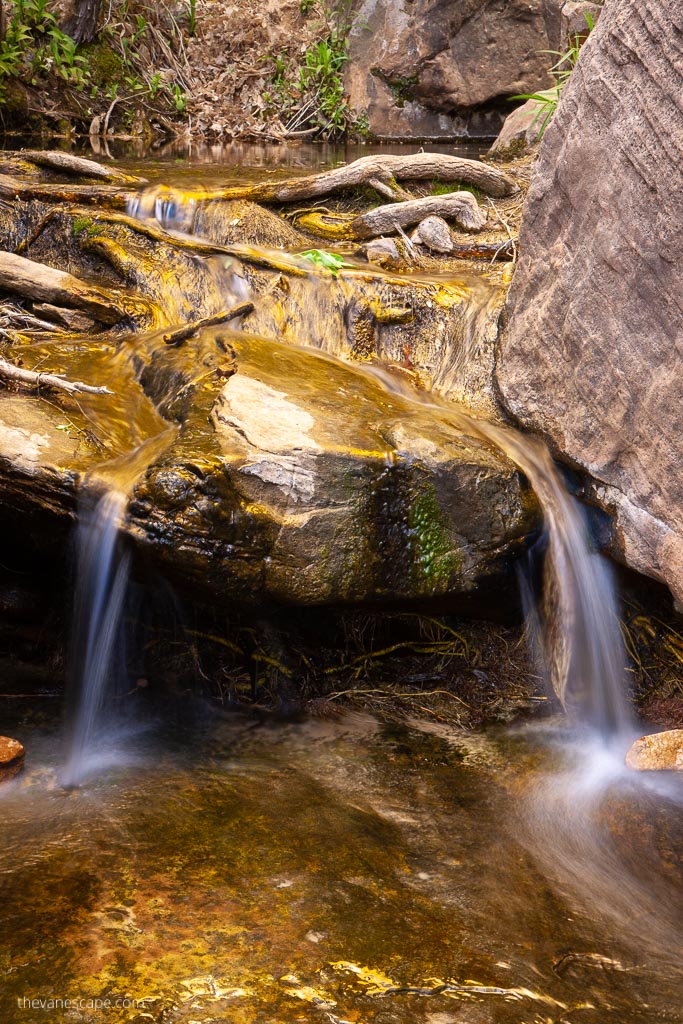
Kayenta Trail in Zion National Park
Shuttle Stop: 6
Hike Location: The Grotto
Round Trip Duration:1.5 hours, 2.0 miles (3.2 km)
Elevation Change: 150 feet (46 m)
Trail Description: It’s an unpaved climb to the Emerald Pools. Connects The Grotto to the Emerald Pools Trails.
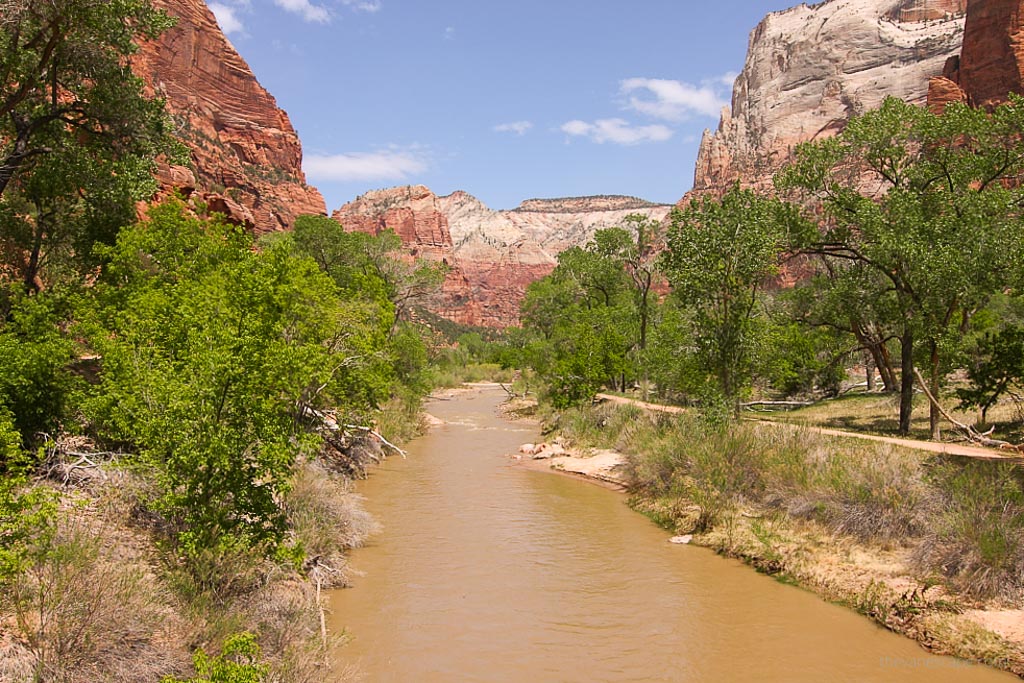
Best Strenuous Hikes in Zion National Park
Angels Landing via West Rim Trail in Zion National Park
Shuttle Stop: 6
Hike Location: The Grotto
Round Trip Duration: 4 – 5 hours, 5.4 miles (8.7 km)
Elevation Change: 1488 feet (453 m)
Trail Description: We love this hike, so you can find details with the map in a separate article. The last section is a route to the summit along a steep, narrow ridge. YOU MUST HAVE A PERMIT for this hike. Check details on this post.
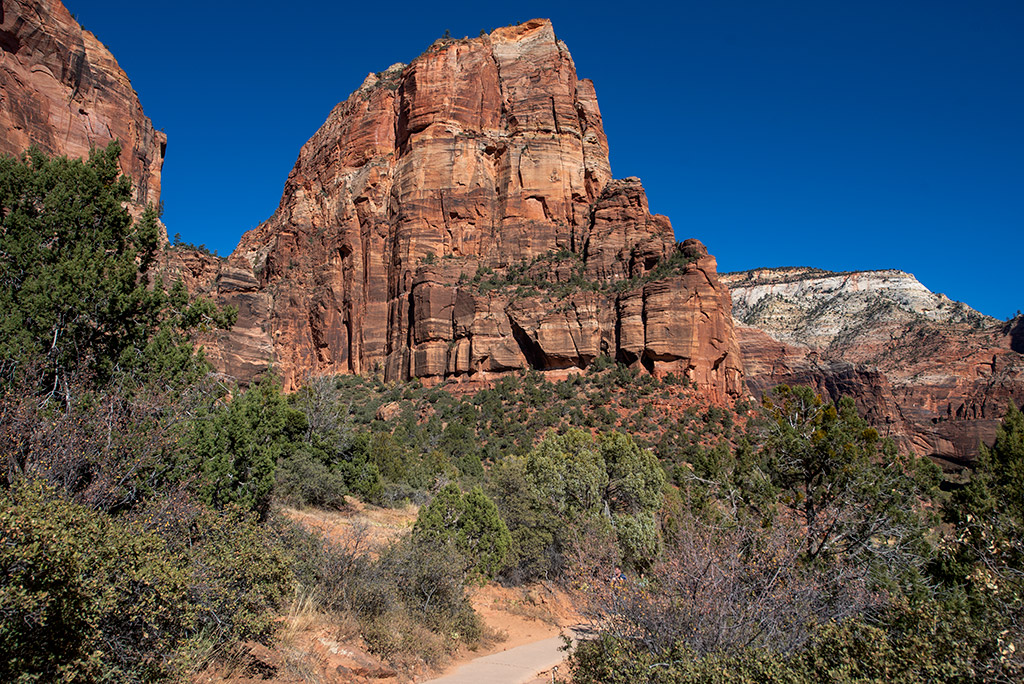
The Narrows via Riverside Walk
Shuttle Stop: 9
Hike Location: Temple of Sinawava
Round Trip Duration: up to 8 hours, 14.0 miles (22.5 km)
Elevation Change: 334 feet (102 m)
Trail Description: We love this hike, so you can find details with the map and how to prepare for it in a separate article.
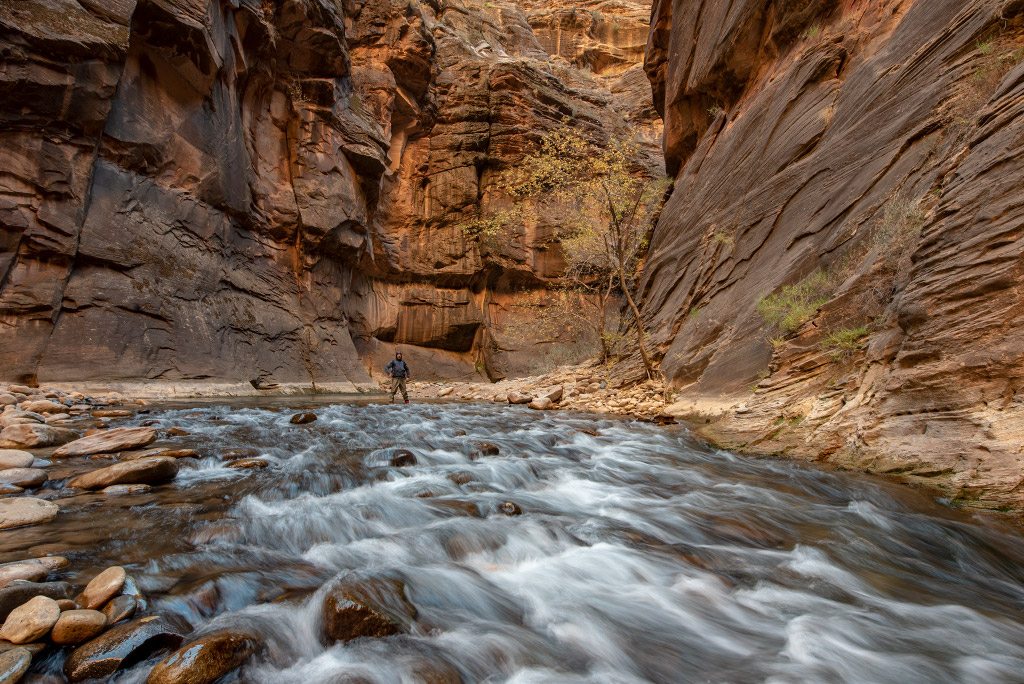
The Subway Hike in Zion National Park
Trailhead Location: Begin on the Kolob Reservoir Road about 8.2 miles above the town of Virgin.
Round Trip Duration: 8.0 miles, 8 to 10 hours
Trail Description: We love this hike, so you can find details with map, and how to get a permit in our separate article. YOU MUST HAVE A PERMIT for this hike.
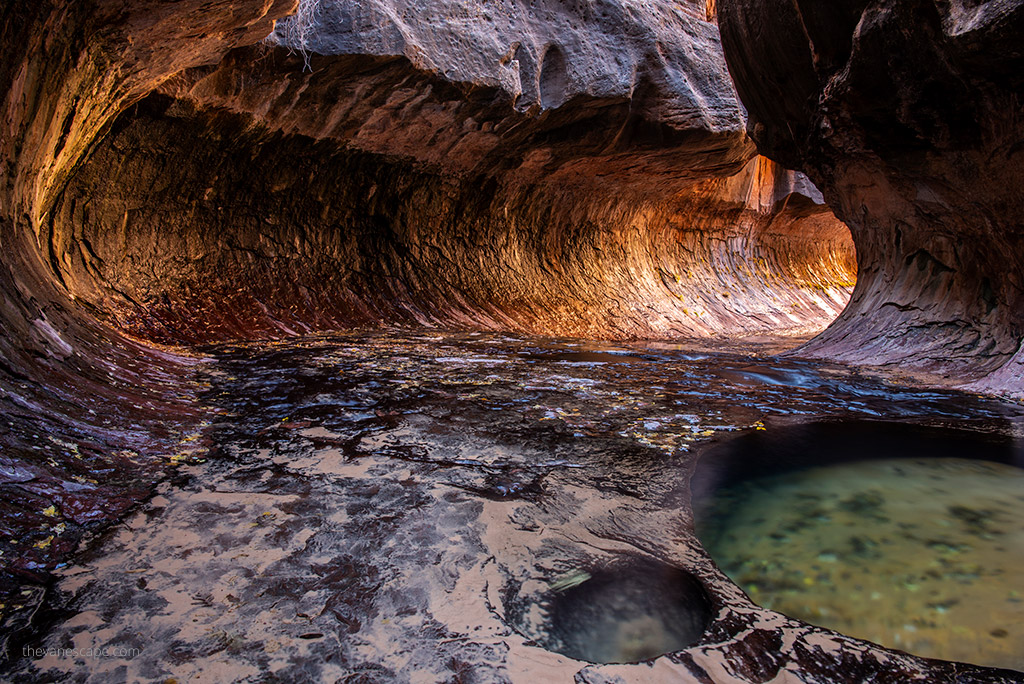
Best Things to do in Zion National Park besides Hiking
2. Explore the Sights along the Zion Canyon Scenic Drive from Shuttle Bus
Be sure to take the free shuttle bus both ways. You can hop on and off freely at any of the 9 stops. This is a great tour and the best option if you don’t have much time to explore Zion. Be sure to get off at stop number 9 and walk at least a bit along the Virgin River.
3. Take a Riverside Walk
As mentioned earlier, the last stop on shuttle bus #9 is the Temple of Sinawava. This is the start of the Riverside Walk, a scenic 2.2-mile loop trail. It’s an easy, paved path but offers breathtaking views along the river. You don’t have to go all the way to enjoy this part of the park. Walk as far as you can. At the end of the trail, the hike to the Narrows begins. Taking a Riverside Walk is one of the best things to do in Zion.
4. Admire Wildlife and Birding Watching in Zion National Park
Zion is home to 291 species of birds. While walking in the park is worth observing the trees and rocks to spot birds. It’s also home to 78 species of mammals, 37 species of reptiles and amphibians, and 8 species of fish.
You can encounter peregrine falcon, California condor, yellow warblers, lizards, Mule deer, wild turkeys, Western rattlesnakes, gray foxes, mountain lions, red-spotted toads, porcupines, and much more. Check the official website for the list.
5. Learn about the area at the Zion Human History Museum
Make sure to visit this Museum, as it’s a pretty exciting place. You learn a lot about the park and the surrounding area. Exhibits include geology, plants, animals, survival, and community.
6. Make a Picnic in Zion
There are several beautiful picnic spots within the park. You can relax in a natural setting and enjoy a meal with friends or family. They are Visitor Center Picnic Area, Grotto Picnic Area, and Kolob Canyons Picnic Area. Make sure to keep food away from wildlife. Use recycling bins for aluminum cans and plastic bottles.
7. Get your feet wet in the Virgin River
Even if you don’t plan to make the Narrows trail, one of the fun things to do in Zion is wade in the river water. In summer, the water is warm enough to wade with your feet in the river. However, it’s worth having neoprene shoes or waterproof sandals. We did the Narrows hike in November. It was already cold, and the water was frigid, so we needed more preparation. For details, see this article.
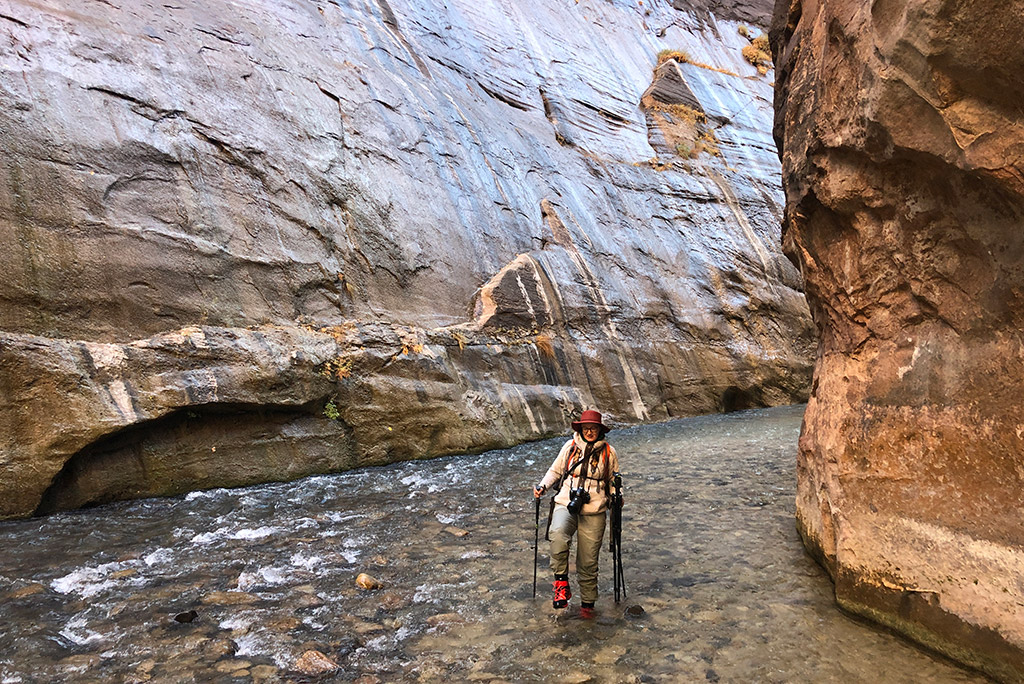
8. Enjoy Springdale
Make sure you take some time to walk around Springdale. The town is charming, you will find excellent shops and restaurants, and you can also go on exciting trips.
9. Admire the Sunset in Zion National Park
It’s worth waiting in the park for the sunset. Due to the orange, rusty, and red colors of the rocks, the sunsets in Zion are simply spectacular. They are breathtaking.
10. Drive the Zion-Mount Carmel Highway
The Zion-Mount Carmel Highway, which runs east through the park from the south entrance, is as scenic as the Zion Canyon Scenic Drive. It winds above the valley and offers dramatic views as the road is next to the cliff face. The route passes through a narrow, 1.1-mile tunnel. Vehicles taller than 13 feet and 1 inch aren’t allowed in the tunnel. So check all the rules and fees on the park’s website before taking this ride.
Best Things to Do in Zion National Park in One Day
If you have only one day in Zion National Park and would like to see the beauty of the Park, the best idea is to take a shuttle bus at the Visitor Center and drive to the last stop of the Zion Canyon Scenic Drive: 9. Temple of Sinawava.
Then get off the bus and go on Riverside Walk. It’s one of the best things to do in Zion, as it offers stunning scenery. It takes about 1.5 hours, and the views are spectacular. Go to the end of the path, where The Narrows starts. Return to the bus.
Then get off at point 6, at The Grotto. You can get to Angels Landing Trail (you must have a permit). You can go to the top, or you can go to the platform where you have spectacular views too. You can find details in a separate article.
If you don’t have a permit, or you don’t want to climb high and prefer easier hikes, take Lower Emerald Pool Trail (bus stop 5) or Weeping Rock Trail (bus stop 7). Finally, return to the bus and get off at the 3rd stop. You have a beautiful view of the river and Zion from the bridge next to the road. It is an excellent point for the sunset. If you don’t have a permit for this hike, choose one of those that we recommended above. All hikes in Zion are spectacular!
Essentials for Your Day in Zion National Park
Whether the trail is short or long, easy or demanding, you must always be prepared for your hike in Zion National Park. Accidents happen, or the weather can change dramatically in a few minutes. That’s why we pack carefully, even for shorts and leisurely walks. Below is a list of our essentials, the most necessary things you must have on the trail. So we pack the essentials even on day hikes.
We do not use most of them but take them just in case. If you are hiking responsibly and carefully, you should have them. They might save your life or someone else’s. These items could be essential to your survival if something happens on the trail.
These are items that we always have on hiking trails with us. But if you need a more detailed hiking packing list, you can check out our comprehensive Day Hiking Packing List.
Hiking Tips for Visiting Zion National Park
Balance Water and Food
Do not force yourself to drink fluids. Drink when you are thirsty and stop when you are quenched. Snacks are also important during your hike. Overhydration can lead to hyponatremia, so take high-protein snacks and balance water and food during your hike.
Knows the Signs of Hyponatremia, Hypothermia, and Heat Illness
Signs of Hyponatremia
Hyponatremia is a low sodium concentration in the blood. It is caused by overhydration. So, you should always balance hydration with salty and high-protein snacks and meals, electrolytes, or protein bars, and rest frequently.
Mild symptoms include a decreased ability to think, headaches, nausea, and vomiting, difficulty walking, and poor balance. Severe symptoms include confusion, seizures, and even coma.
Signs of Hyphothermia
Hypothermia is defined as a body core temperature below 35.0 °C (95.0 °F) in humans. Symptoms depend on the temperature. Hypothermia is when heat is lost faster than the body can produce it. It occurs when someone is exposed to external factors that lower body temperature for a long time, e.g., ice water or in the cold. Signs of hypothermia: uncontrolled shivering, exhaustion, and confusion.
The best idea is to take extra dry clothes, like thermal underwear (for men or women), and put on dry clothing. Drink warm water and liquids, and protect yourself from cold, wind, rain, or snow by using warm clothes (such as waterproof layers, warm hoodie) and an emergency shelter or emergency sleeping bag.
Signs of Heat Illness
Heat illness is a spectrum of disorders caused by environmental exposure to heat. It includes minor conditions such as heat cramps, heat syncope, and heat exhaustion, as well as the more severe disease known as heat stroke. Signs of heat illness are headaches, dizziness, vomiting and nausea, cramping, and decreased urine output.
So remember that hydration is most important during your hike. Take a lot of water, but balance it with high-energy foods, such as high-protein bars or beef jerky. Rest in the shade, and remember to protect your head and body from the sun.
Take Care of Your Body
Watch your body while hiking. Even experienced hikers have weaker days. If you start to feel dizzy, disoriented, or nauseated, take a rest. Drink, eat a salty and high-proteins snack, and rest as long as you feel better.
If you are cold, put on extra layers and eat. If you are hot, drink more water and rest in the shade. Protect your body from the sun.
Restore Your Energy & Avoid Heat
We use much more energy during the hike. So eat more before you start hiking, even double your average intake.
And take extra snacks for the trail. Calories play an essential role in regulating body temperature and affect our behavior during hiking.
Start hiking early in the morning if you go on the trail in the summer months. You will avoid heat. During noon take more extended breaks in the shade, relax and enjoy the views, but avoid exhausting hiking at noon.
Always take extra clothing.
Even in summer, you can cool down the body. Be prepared for the weather changes.
During winter, take extra clothes too, especially waterproof and windproof and extra socks. Always take a warm hat, gloves, and thermal underwear.
- Utah National Parks Road Trip Itinerary
- 10 Best Things To Do in Canyonlands National Park
- 10 Best Things To Do In Arches National Park
- 10 Best Things to Do in Bryce Canyon National Park
- Best Hikes in Zion: Angels Landing Hike
- The Narrows Zion Hiking Guide
- The Subway Zion Hiking Guide
- Moqui Caverns near Kanab, Utah
- The Nautilus Hike Utah
- Buckskin Gulch Day Hike
- Paria Rimrocks Toadstool Hoodoos
- Make sure to read also our Utah Travel and Photography Guide
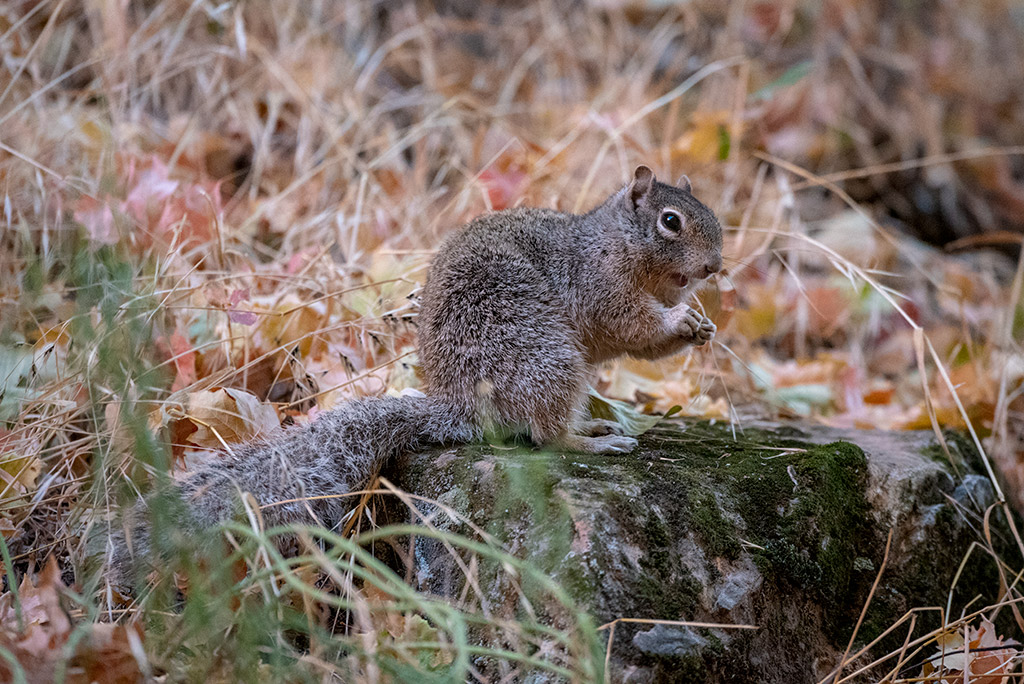
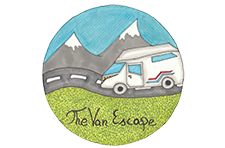
Thank you for the heads up as we’re planning to visit and totally forgot about securing wilderness permits. The boys are so excited to go canyoneering. Will make sure to visit the Canyon Junction.
As a hiker, the Zion National Park has been on my list for a long time as i also love to take scenic landscape shots with my camera. Looking at the variety of hiking trails you have mentioned, I can’t choose which one I would do first but would love to try them all. Fantastic tips also for people on what to take on a hike. Its amazing how many times I have known other hikers not having the right equipment. I also sometimes forget things. 😛
I love the rugged, rocky scenery in this park – it looks like the kind of place I could easily spend a week – or maybe even more. I also like that there’s a shuttle bus stopping at a good cross-section of park attractions – it’s a great way of keeping some of the traffic off the road. I’m a big fan of supporting the locals when I’m visiting an area, so would definitely take the option of staying in one of the towns – your favourite sounds like a winner!
We loved our visit to the Utah parks in 2019. We spent on day in Zion and it was easy to see that there was so much more to do. I did not know we needed a wilderness permit for some parts of the park. We didn’t stay in Springdale. But having a shuttle from there might make that a better choice next time. We really wanted to stay at the Lodge but we left our planning until too late. Thanks for taking me back!
Zion is one of the places I visited briefly on a family trip in the 1980s and really want to return to and explore more. It’s useful to know you are allowed to drive the Scenic drive only if you are staying at Zion Lodge, or sing the East Entrance tunnel. And your summary of the various trails is also super helpful.
Wow! This is quite a comprehensive post. I had never heard about Zion National Park but now your pictures and the detailing have got me interested. I would prefer to take the shuttle. It will help to identify all the important pit stops and make the most of it. The weeping rock and Temple of Sinawava have got my eye.
Zion National Park looks like a great place for hiking. It is good to know that Zion National Park has both easy and moderate hiking trails. I particularly liked the Narrows Trail. The photographs are awesome and had me in. The Subway trail also sounds nice with walking down the waterfalls. As a hiker, I love to explore this kind of places. Hope to visit this part of the world some day.
Looks like you definitely need more than a day to take in all the sights. If I ever visit, I’ll definitely have to take up your suggestion for the 1-day itinerary to make sure I get to see all the main sights of the national park. Thanks for all the details!
Great post!! As an adventurist, I have always loved me a great hike, and any hike in the canyon fits just perfect to me. I never thought that the national park would have so many options and places to see. I would love to get some pictures of these pristine canyons, I love hoe amazing the weeping waterfall looked.
Ah we love, love, loved our trip to Zion! This post brings it all back for me. Your wildlife pics are so beautiful!
Zion was one of my very favourite USA National Parks visited with my family when I was a kid (back in the 1980s) and made a huge impression on me, visually. Great to read some current tips on how to make the most of a visit today!
I could look at photos of Zion National Park all day, and the more I read the more it climbs my bucket list. I wasn’t aware that they had a shuttle bus or that you needed permits, those are super helpful tips. Short hikes are always my favorite and one like Weeping Rock would be exactly my cup of tea, or Upper Emerald Pool. But, for the Subway Hike I htink I’d copnsider leaving my “2 miles or less” preferances behind to experience something so unique!
Holy cow, this is a thorough resource! You’ve truly covered everything that anyone needs to know to visit Zion. (And your photos are AMAZING, as always.)
I am planning a trip to the parks in Utah, so this will come in handy. This is a great resource.